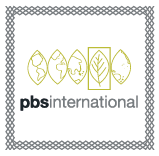The climate is a typical rainy (summer) and dry (winter) each approximately six months long. The rainy period starts in late October and extends through March and into April. (See Figure 1)
Bird damage to sorghum (birds eat the sorghum grain in the field with preference to the milky to soft dough stage) is minimal during the rainy period as the birds have optional choice of several sources of grains and fruit. However in the dry period, optional sources of diet for birds are tremendously reduced. Sorghum planted in an “off season” winter nursery is increasingly susceptible to bird damage as the planting is delayed in the months of April and May. Consequently, we at Embrapa have developed the use of plastic screen bags (20 x 60 cm) to protect sorghum panicles from bird damage (See Figure 2).
Birds can easily rip through paper pollination bags and destroy the grain. During the winter season of 2012, we experienced total sorghum loss in a field protected by screen bags. A band of migratory large parakeets destroyed a large experimental trial in less than 48 hours. They completely destroyed the plastic screen bags. (See Figure 3).
On the 18th June, 2013, 54 PBS International trial bags of 2 sizes (27 each size) were used to protect sorghum panicles near the pollination stage. The area was irrigated with a centre pivot during the dry season. No rains occurred, but early morning dew is very common on a daily basis. The panicles were harvested in late September. Sorghum panicles not protected were totally destroyed by birds.
None of the PBS International bags were damaged or ripped open by birds. However the bird pressure in 2013 was less severe than in 2012. The bags have been stored and the trial will be repeated in 2014.
Seed quality was excellent.
Written and research conducted by: Robert Scheffert, Sorghum Breeder, Embrapa Maize and Sorghum, Sete Lagoas, Minas Gerais, Brazil







